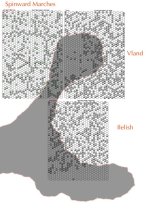I absolutely swear I was NOT looking for this... Just scrolling through Reddit for gems like I do every few months. And here is some discussion of it and... possibly the thread you were thinking of?Many years ago there were a couple of threads about reducing the size of the Imperium to only a few sectors and thus having more of the surrounding polities available "in play" so to speak.
I thought I had started a thread on it, but it is likely it just came up in another. IIRC Rob did some maps of a reduced size Imperium.
To the search engine...
Reddit: Collapsing Charted Space
And the 14yo thread they're referencing...
Great Minds Think Alike

